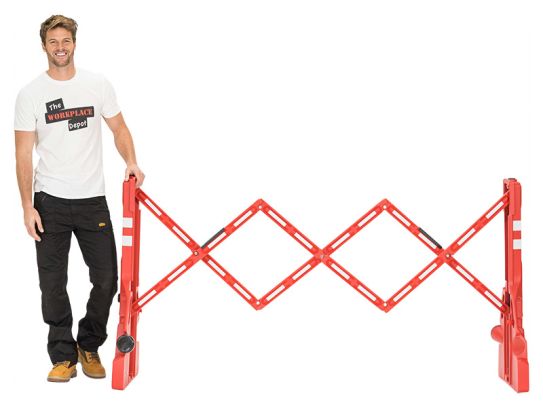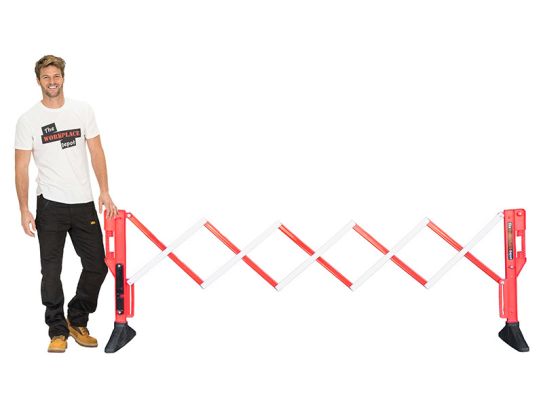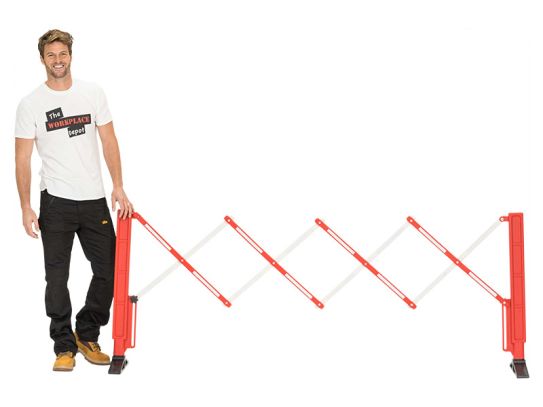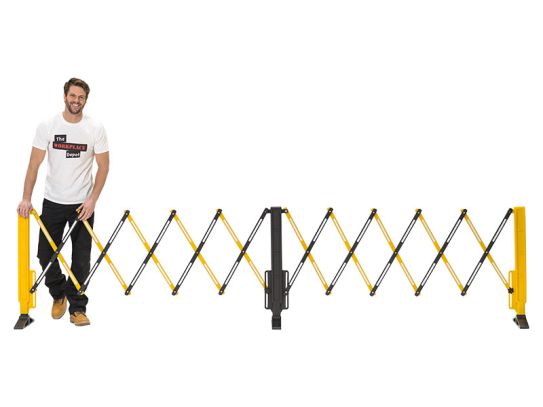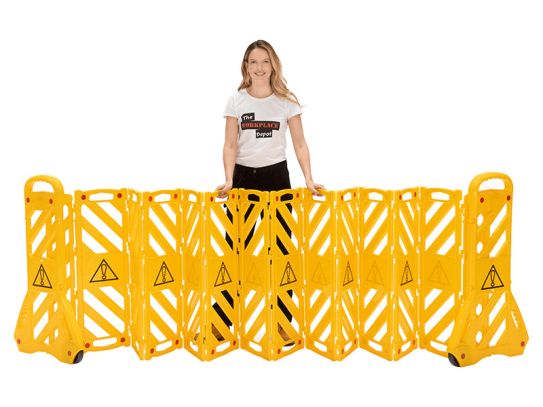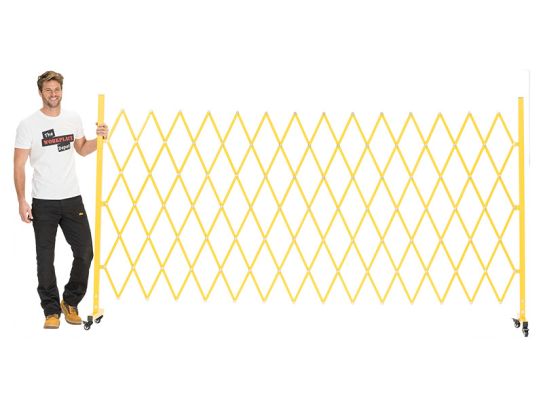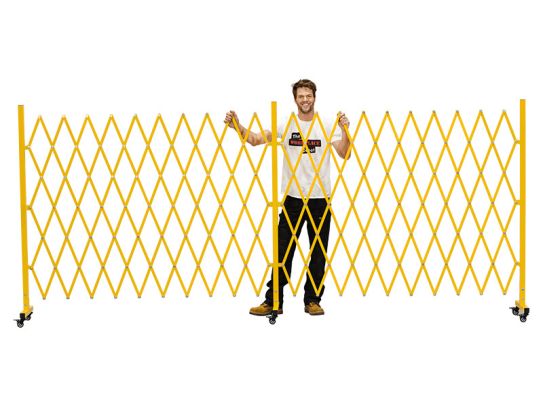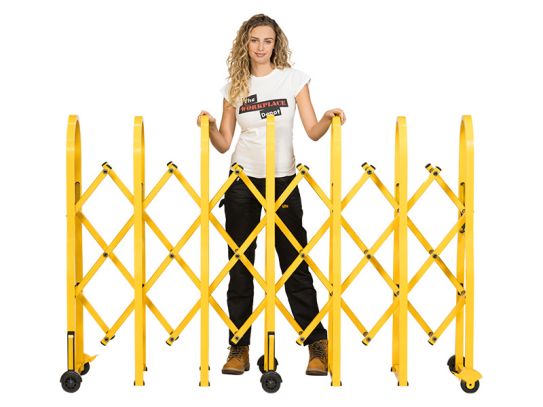Expandable Safety Barriers
Keep your workspace safe with our expandable safety barriers. These barriers easily expand to fit any space, making them perfect for a variety of work environments. They are made of durable materials and are easy to set up and take down. Protect your workers and equipment with expandable safety barriers.
Are you tired of struggling to find a safety barrier that fits your space? Look no further than expandable safety barriers! Our barriers are designed to be adjustable, so you can easily block off any area, no matter the size or shape. Made of sturdy and durable materials, our barriers are built to withstand impacts and other forces, keeping your space safe and secure. Plus, with reflective tape and warning lights, our barriers are highly visible, ensuring that everyone stays aware of the restricted area. Don't settle for a one-size-fits-all barrier - choose expandable safety barriers for the ultimate in flexible protection. Order yours today!
What Are Expandable Safety Barriers?
An expandable safety barrier is a type of barrier that can be extended or contracted to fit a particular space. These barriers are often used in construction sites and other areas where it is necessary to block off certain areas to prevent access. They are typically made of sturdy, durable materials such as steel or aluminium, and are designed to be able to withstand impacts and other forces that could potentially damage them. Some expandable safety barriers may also include additional features, such as reflective tape or warning lights, to make them more visible and effective at preventing accidents.
What Are the Different Types of Expandable Safety Barriers?
There are several different types of expandable safety barriers available on the market. Some of the most common types include:
- Telescoping barriers: These barriers are designed to be extended or contracted by sliding one section into another, much like a telescope. This allows them to be easily adjusted to fit different spaces, and makes them a versatile and flexible option for safety barriers.
- Folding barriers: These barriers are designed to be folded up or down, allowing them to be easily transported and stored when they are not in use. They are often used in situations where space is limited, such as in crowded construction sites or other areas where it is necessary to block off a small area.
- Expandable barriers: These barriers are designed to be extended by pulling on one end, similar to a tape measure. This allows them to be quickly and easily adjusted to fit different spaces, making them a convenient and practical option for safety barriers.
- Modular barriers: These barriers are made up of individual sections that can be connected together to create a larger barrier. This allows them to be easily customised to fit different spaces, and makes them a versatile and flexible option for safety barriers.
In addition to these types of expandable safety barriers, there are also many other variations and styles available on the market, each with its own unique features and benefits. To choose the right type of expandable safety barrier for your needs, it is important to consider the specific requirements of your situation and the space you need to block off.
What Are Some Common Uses for Expandable Safety Barriers?
- Construction sites
- Warehouses
- Factories
- Industrial environments
- Public spaces, such as parks, pedestrian walkways, and sports arenas
- Any space where it is necessary to block off certain areas for safety or security reasons.
What Are Some Benefits of Using Expandable Safety Barriers?
There are several benefits to using expandable safety barriers in construction sites and other areas where it is necessary to block off certain areas. Some of the main benefits include:
- They can be easily adjusted to fit different spaces, allowing you to block off areas of any size or shape. This makes them a versatile and flexible option for safety barriers.
- They are typically made of strong and durable materials, so they can withstand impacts and other forces that could potentially damage them. This makes them effective at preventing accidents and ensuring the safety of workers and others in the area.
- They are often designed with additional features, such as reflective tape or warning lights, to make them more visible and effective at preventing accidents.
- They can be easily transported and set up, so you can quickly and easily create a safe working environment.
- They are typically cost-effective, making them an affordable option for construction sites and other areas where safety barriers are needed.
The use of expandable safety barriers can help to prevent accidents and ensure the safety of workers and others in the area, making them an important part of any construction site or other work environment.
What Safety Considerations Should Be Taken into Account When Using Expandable Safety Barriers?
There are generally no significant safety issues associated with expandable safety barriers. These barriers are designed to be strong and durable, and are typically made of materials such as steel or aluminium that can withstand impacts and other forces that could potentially damage them. As long as they are used correctly and maintained in good condition, expandable safety barriers should not pose any safety risks.
It is important to note, however, that any safety barrier, including expandable safety barriers, can be a tripping hazard if not used correctly. For example, if a barrier is not properly secured or is placed in an area where it could be easily knocked over, it could potentially cause someone to trip and fall. To avoid this risk, it is important to properly install and maintain expandable safety barriers, and to make sure that they are used in the correct way.
How Do You Maintain and Clean Expandable Safety Barriers?
To maintain expandable safety barriers, you should follow these steps:
- Regularly inspect the barriers to check for any signs of damage, such as dents, scratches, or other types of wear and tear.
- If you notice any damage, repair or replace the affected parts as soon as possible to prevent the damage from spreading or becoming worse.
- Clean the barriers regularly to remove any dirt, debris, or other contaminants that could potentially damage the barrier or make it less effective. This can be done with a mild detergent and water, or with a specialised cleaning product designed for use on safety barriers.
- Check that the barriers are securely anchored to the ground or other surfaces, and tighten any loose or damaged parts as needed.
- Store the barriers in a dry, protected area when they are not in use, to prevent them from being damaged by the elements or other sources of damage.
By following these steps, you can help to ensure that your expandable safety barriers remain in good condition and continue to provide effective protection against accidents and other safety hazards.
Are Expandable Safety Barriers Easy to Transport?
Yes, expandable safety barriers are typically easy to transport from one location to another. They are often designed to be lightweight and compact, making them easy to move and store when they are not in use. Some expandable safety barriers may also come with wheels or other features that make them easier to transport, such as handles or straps. In general, expandable safety barriers are a convenient and practical option for any situation where you need to be able to move them from one place to another.
Do Expandable Safety Barriers Come with Wheels?
Some expandable safety barriers may come with wheels, while others may not. Whether or not a particular safety barrier has wheels will depend on the design and features of the barrier. Some expandable safety barriers may be designed with wheels to make them easier to transport and move from one location to another. Other barriers may not have wheels, but may come with other features, such as handles or straps, that make them easier to carry and transport.
To determine whether a particular expandable safety barrier comes with wheels, you will need to check the product specifications or contact the manufacturer. In general, however, expandable safety barriers are typically designed to be lightweight and compact, making them easy to transport and move from one location to another, whether or not they have wheels.
Are There Any UK or European Industry Standards or Regulations That Apply to Expandable Safety Barriers?
Yes, there are several UK and European industry standards and regulations that apply to expandable safety barriers. These standards and regulations are designed to ensure that safety barriers are safe, effective, and fit for their intended use. Some of the key standards and regulations that may apply to expandable safety barriers include:
- EN 1317-2: This European standard specifies requirements for the performance and testing of road restraint systems, which include safety barriers used on roads and highways. The standard covers both temporary and permanent safety barriers, and sets out requirements for their design, construction, and testing.
- BS EN 1317-3: This British standard is similar to EN 1317-2, but is specifically intended for use in the UK. It specifies requirements for the performance and testing of road restraint systems, including safety barriers used on roads and highways.
- BS EN ISO 14122-3: This British standard specifies requirements for the design and construction of permanent means of access to machinery, including safety barriers and other safety measures. The standard covers both fixed and movable safety barriers, and sets out requirements for their design, construction, and testing.
- BS EN ISO 14122-4: This British standard is similar to BS EN ISO 14122-3, but is specifically intended for the use of safety barriers in temporary and portable means of access to machinery.
In addition to these standards and regulations, there may also be other specific requirements that apply to expandable safety barriers in certain industries or settings. It is important to check with the relevant authorities or industry organisations to ensure that you are using safety barriers that comply with all applicable standards and regulations.
